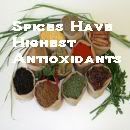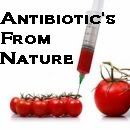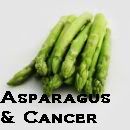
Though many people try to banish dandelion from their
lawns and call them weeds, dandelions are actually a very valuable and beneficial edible plant, and are not only an early spring source of nourishment for us but also for the honeybees and butterflies.
The whole plant can be consumed: the root can be made into a tea, the leaves can be used in salad or cooking, the flowers can made into jelly, wine or cookies, and even the white sap in the stem can be used to improve skin complexion and to help heal skin blemishes.
Dandelions function to rejuvenate and detoxify the liver, clearing up jaundice and other symptoms of liver and gallbladder congestion, promoting kidney health, clearing up skin conditions, removing toxins from the body, and helping digestive problems.
Dandelion leaves are 15% protein and high in vitamins and minerals.
One cup of dandelion greens contains 112% daily recommendation of
vitamin A, 32% of vitamin C, and 535% of vitamin K. They also contain
218 mg potassium, 103 mg calcium, and 1.7 mg of iron.
Dandelion greens are also good sources of vitamins
B1 (9% RDA), B2 (11% RDA) and B6 (11% RDA) and vitamin E (13% RDA).
The nutrients in dandelion greens may help reduce the risk of cancer,
multiple sclerosis, cataracts, age-related macular degeneration and
stroke. Dandelion contains anti-inflammatory properties which may
provide benefit to those with asthma and other inflammatory diseases.
Suppose your doctor tells you, on your next visit, that he [or she] has just discovered a miracle drug which, when eaten as a part of your daily diet or taken as a beverage, could, depending on the peculiarities of your body chemistry: prevent or cure liver diseases, such as hepatitis or jaundice; act as a tonic and gentle diuretic to purify your blood, cleanse your system, dissolve kidney stones, and otherwise improve gastro-intestinal health; assist in weight reduction; cleanse your skin and eliminate acne; improve your bowel function, working equally well to relieve both constipation and diarrhea; prevent or lower high blood pressure; prevent or cure anemia; lower your serum cholesterol by as much as half; eliminate or drastically reduce acid indigestion and gas buildup by cutting the heaviness of fatty foods; prevent or cure various forms of cancer; prevent or control diabetes mellitus; and, at the same time, have no negative side effects and selectively act on only what ails you. If he [or she] gave you a prescription for this miracle medicine, would you use it religiously at first to solve whatever the problem is and then consistently for preventative body maintenance?
All the above curative functions, and more, have been attributed to one plant known to everyone, Taraxacum officinale, which means the "Official Remedy for Disorders." We call it the common dandelion. It is so well respected, in fact, that it appears in the U.S. National Formulatory, and in the Pharmacopeias of Hungary, Poland, Switzerland, and the Soviet Union. It is one of the top 6 herbs in the Chinese herbal medicine chest.
Health Benefits of Dandelion Leaf
Dandelion Leaf offers a number of benefits for the liver and gallbladder.
A natural diuretic, Dandelion Leaf is commonly used to help remove
excess water and toxins from the body. Dandelion Leaf helps promote bile
excretion from the liver so the body can more efficiently process foods
and liquids while also purging harmful toxins. In addition, improved
bile flow makes it possible for the body to better metabolize fat, which
helps optimize the body’s cholesterol levels.
Dandelion Leaf is also effective at stimulating a sluggish
gallbladder, which is responsible for storing and excreting bile as the
body needs it. This natural herb is effective at promoting blood purity,
which helps reduce the burden placed on the liver to filter out toxins.
By helping to purify the blood, Dandelion Leaf allows the liver to more
effectively perform its function.
- A natural source of minerals such as calcium, potassium, phosphorus, zinc and iron
- Provides the Vitamins A, B, C, and D
- Acts as a blood purifying agent
- A mild laxative for constipation symptoms
- Contains the antioxidant luteolin
- Stimulates urinary function to help flush out toxins (diuretic)
- Promotes optimal digestive function
- Supports normal bile production (cholagogue)
- Nourishes and boosts overall liver (hepatic) performance
Health Benefits of Dandelion Root
Dandelion Root is filled with essential vitamins and minerals for your
body. It provides Vitamin A, Vitamin B complex, Vitamin C, and Vitamin
D. Dandelion root also contains zinc, iron and potassium. Vitamins A, B
complex and C are important for good heart health.
Dandelion root is an herbal bitter, and therefore used as a liver tonic. It helps to cleanse the bile ducts, and promote healthy digestion. The root is one of the most detoxifying herbs. It works principally on the liver and gallbladder to promote removal of waste products. It encourages steady elimination of toxins due to infection or pollution. It is also used by herbalists to prevent gallstones.
It is beneficial for many conditions including constipation. Dandelion is considered a gentle laxative, and can be used to encourage a bowel movement. It is usually added with other laxative herbs, depending on the severity of the patient.
Due to it's detoxifying properties, Dandelion root is useful for skin conditions such as acne and eczema. Using a tincture, or salve made with dandelion can help both skin conditions. Drink a cup of dandelion root tea to help promote cleansing from the inside as well.
Research conducted in 1974 confirmed the roots and the leaves are a powerful diuretic natural diuretic. This can help clean out the kidneys and promote proper kidney function. Due to it's potassium content, dandelion is a good choice for a diuretic. OTC diuretics deplete potassium out of the body, and can be harmful.
Dandelion root is used by herbalists to detoxify the body. It helps to detoxify the whole body. In 1999, a study in Japan, showed that dandelion could be used as an anti- cancer agent.
Dandelion root is an herbal bitter, and therefore used as a liver tonic. It helps to cleanse the bile ducts, and promote healthy digestion. The root is one of the most detoxifying herbs. It works principally on the liver and gallbladder to promote removal of waste products. It encourages steady elimination of toxins due to infection or pollution. It is also used by herbalists to prevent gallstones.
It is beneficial for many conditions including constipation. Dandelion is considered a gentle laxative, and can be used to encourage a bowel movement. It is usually added with other laxative herbs, depending on the severity of the patient.
Due to it's detoxifying properties, Dandelion root is useful for skin conditions such as acne and eczema. Using a tincture, or salve made with dandelion can help both skin conditions. Drink a cup of dandelion root tea to help promote cleansing from the inside as well.
Research conducted in 1974 confirmed the roots and the leaves are a powerful diuretic natural diuretic. This can help clean out the kidneys and promote proper kidney function. Due to it's potassium content, dandelion is a good choice for a diuretic. OTC diuretics deplete potassium out of the body, and can be harmful.
Dandelion root is used by herbalists to detoxify the body. It helps to detoxify the whole body. In 1999, a study in Japan, showed that dandelion could be used as an anti- cancer agent.
When to Harvest
The best time to harvest dandelion leaves and roots is early spring
before the flower blooms and late fall once the flower has gone by.
Dandelion taproots are deep and are best harvested with a shovel or
trowel. Leaves can be added raw to salads, or steamed or sauteed with
garlic like other dark leafy greens.
To make dandelion tincture, harvest the root and leaves when flowers
are not present. Both leaves and roots can be washed, chopped, put into a
glass jar, and covered with alcohol such as 100 proof vodka. Steep in
dark cupboard for 6 weeks. Strain and save liquid. A dose is 10 – 30
drops of tincture per day to cleanse liver.
The long roots may be peeled, dried, roasted, ground, then used as
a coffee or tea drink.
The flowers may be made into a dandelion wine with the addition of
sugars and a citric acid. The wine has a moderate alcohol content.
The plants were also used for a variety of medicines. Dandelion
jelly is also a conversation piece.
If you venture to use dandelion greens and flowers, make sure they
are chemical free. Also be sure the fertilizer used on them is an
organic one safe for foods.
Recipes
DANDELION JELLY
1 quart dandelion blossoms (picked in the morning, without
stems)
1 quart water
1 package pectin
1 teaspoon lemon juice or orange extract
2-4 cups sweetener
Boil the washed blossoms in water for three minutes. Drain. To 3
cups liquid add the pectin, extract and sweetener. Bring to a boil and
boil for three minutes. Skim foam, Place in sterilized jelly jars
with two-piece canning seal and ring. Process jarred jelly in a
boiling water bath for 10 minutes. Remove and let cool.
DANDELION SALAD
1 head Bibb lettuce, rinsed, dried and torn into bite-size
pieces
1/4 lb. dandelion leaves, rinsed, dried and torn into bite-size
pieces
3 to 4 radishes, sliced
4 medium mushrooms, sliced thin
2 scallions, minced
Assemble and serve with the following dressing.
Lemon Dressing:
3 Tablespoons lemon juice
1 Tablespoon Dijon-style mustard
1/4 teaspoon salt
3/4 cup olive oil
Combine all but olive oil. Mix well. Add the olive oil and mix well
again. Serve over salad.
DANDELION OMELET
1 cup dandelion hearts
4 eggs
Oil for frying
Fry the dandelion hearts in oil. Pour well-beaten eggs over the
top of the greens. Cook like an ordinary French omelet.
Tastes like an asparagus omelet.
DANDELION COOKIES
For this dandelion recipe, you’ll need: 1⁄2 cup oil, 1⁄2 cup honey, 2 eggs (or alternative), 1 tsp. vanilla extract, 1 cup flour, 1 cup dry oatmeal, and 1⁄2 cup dandelion flowers.
1) Preheat the oven to 375.
2) Mix the oil and honey and then beat in the 2 eggs (or alternative) and vanilla.
3) Remove the yellow flower parts from the green parts (compost the green parts).
MORE RECIPES
4) Stir in the flour, oatmeal, and dandelion flowers.
5) Drop the batter by tablespoonfuls onto an oiled cookie sheet.
6) Bake for 10-15 minutes.
MORE RECIPES
Study on Dandelion



Filed under: Foods, Superfoods, Drinks & Herbs
Please leave a comment below.
_________________________________________________________
You Might Also Like-



Filed under: Foods, Superfoods, Drinks & Herbs
Please leave a comment below.
_________________________________________________________





Many a time we take natural ingredients and vegetables for granted and therefore neglect their usage and health benefits. Thanks for this article, I ow know how beneficial dandelions are for us.
ReplyDelete
ReplyDeleteI was diagnosed as a Hepatitis B carrier in 2014, with early liver fibrosis. Antivirals helped at first, but resistance developed, and I lost hope. In 2020, I tried a six-month herbal treatment from NaturePath Herbal Clinic. To my surprise, I tested negative after completing it. This natural approach was life changing and may offer real hope to others with Hepatitis B.
visit: https://www.naturepathherbalclinic.com